George Jansco and his brother Paulie helped usher in America’s modern era of pool. The brothers were inducted into the BCA Hall of Fame in 2019.
________________________________________________
By R.A. Dyer
Back before the newspaper men arrived, and before the TV cameras, and the big-smiling interviews for CBS Sport Spectacular — back before he helped recreate the world of big-time pool — Georgie Jansco held a simple job in Evansville, Indiana. For a few happy years he scrawled down names and numbers on bits of paper and made phone calls. He booked bets. And this he did with great enthusiasm, for Jansco loved few things as much as he loved gambling.
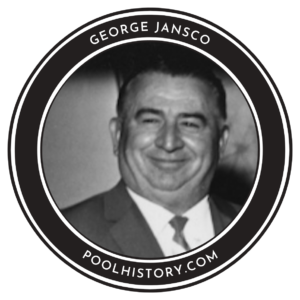 Welcome back. In this installment, I’ll review the early life of George Jansco, the Southern Illinois tournament promoter who rewired the world of professional pocket billiards during the 1960s. George, among his other accomplishments, helped usher in America’s modern age of pool, one in which nine-ball is king. He also helped create the famous Johnston City tournaments, which you can read about here. The Billiard Congress of America posthumously inducted George and his brother Paulie into their Hall of Fame back in 2019, and I was honored to have been selected to help present the award a surviving relative.
Welcome back. In this installment, I’ll review the early life of George Jansco, the Southern Illinois tournament promoter who rewired the world of professional pocket billiards during the 1960s. George, among his other accomplishments, helped usher in America’s modern age of pool, one in which nine-ball is king. He also helped create the famous Johnston City tournaments, which you can read about here. The Billiard Congress of America posthumously inducted George and his brother Paulie into their Hall of Fame back in 2019, and I was honored to have been selected to help present the award a surviving relative.
This article, a version of which appeared earlier in Billiards Digest, also highlights that odd crossroads of gambling culture that became Evansville, Indiana during the 1940s. By virtue of its oil deposits and its World War II shipbuilding, this central Indiana town would join Norfolk, Detroit and nearby towns like tiny DuQuoin as a hub for glorious vice. It’s in Evansville that George Jansco made important connections that fueled his later pool tournaments.
Much of the material for this month’s installment comes from my previous interviews with George’s daughter JoAnn McNeal; her husband Dave McNeal; and Bruce Beaumann, former editor of the Evansville Courier and Press. I’ve also drawn details from previous research for Hustler Days (although I’ve tried to steer clear of material already covered in the book). I’ve reviewed the Marion Daily Republican; the Southern Illinoisan; and the Unsinkable Titanic Thompson, the biography of the golf hustler written by Carlton Stowers.
KEY MOMENTS
First, let me touch upon five key moments in Georgie Jansco’s life:
- He was born on a small farm in Heron, Illinois on Aug. 8, 1915. His parents were Hungarian immigrants; his father a bootlegger by trade.
- At age 17, he started playing shortstop for a minor league baseball team from Fort Worth, Texas.
- He married childhood sweetheart Sadie Lokotich. His daughter JoAnn was born in 1940 in Mississippi, during a stop there for one of George’s ballgames. He had a son Jan, born in 1937, who later died.
- In 1961, George Jansco hosted the first of several tournaments in Johnston City, Illinois. By attracting network television coverage and prominent sports writers like Fox, the tournaments became among the nation’s most famous. Brother Paulie helped run the jamborees beginning in 1962, and then lent a hand with the Las Vegas Stardust tournaments, which George began in 1965. At the time, the Stardust tournaments were considered the richest in professional pocket billiards.
- 5) George died in 1969, at age 5, after suffering a fatal stroke.
Now, somewhere between Moment 3 and 4 (JoAnn puts the year at about 1950), George Jansco went to Evansville, Indiana, a town that started in 1812 as a single log cabin, but which today includes about 300,000 inhabitants. Oil was discovered there during the 1930s — a fact that would lessen the impact of the Great Depression, and which would also lead to a bona fide boom during the 1940s. Likewise, the establishment of the Evansville Ship Yard in 1942 and the conversion of factories for the construction for World War II aircraft swelled employment from 21,000 to 64,000 in a matter of months.
“There was money just flowing, flowing everywhere,” said former newspaper man Beaumann, who attended the very first Johnston City tournament as a young photojournalist. “They’d punch a hole in the ground, and the oil would spray out by itself. … And there was great train service between this part of the country and Chicago, and so it was a wide-open area. I’m sure there was a ton of bootlegging… Small towns that had 500 people suddenly had 50,000.”
The promise of quick money attracts gamblers, and to Evansville they came in great numbers: sinking wells, buying cheap land, striking Good God Almighty gushers. And they came to crap out; to leave their bad-luck lives right in the lobby of the venerable Vendome Hotel, with its all-night gin, its rolling snake-eyed dice. One-pocket and nine-ball rolled non-stop at Adolf’s Bowling Alley and Pool Hall. Bad men played poker day and night at the McCurdy Hotel, the social center of Evansville. There were bars, restaurants, upstairs whorehouses. Here was the relentless life that gambling men crave.
The Shadowy Ray Ryan
Among the most prominent of the gamblers was Ray Ryan, a vaguely shadowy figure said to have paid off cheap gambling debts with two oil leases — only to watch in horror as they struck million-dollar gushers for their new owners. Ryan made a fortune in Evansville (many men did in those days) and invested his money in local businesses like the Relax Bar, which Ryan owned with fellow money-man Whit Epstein. Outwardly and inwardly, the Relax Bar had all the accoutrements of the typical dive: cheap beer, pool tables, a dirty floor strewn with peanut shells. But upstairs, behind the beer cartons and through the cigarette smoke, the Relax Bar was not even a real bar. It was a bookmaking joint, a place where men like Ryan and Epstein could make real money.
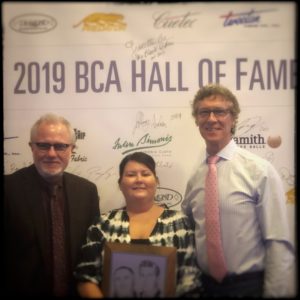
R.A. Dyer, George Jansco’s neice Amy Burgess and Billiards Digest publisher Mike Panozzo at the 2019 BCA Hall of Fame dinner.
And this is where George Jansco came to work during the early 1940s. His friend Ryan (the two had met years earlier playing golf) offered him an opportunity: come to Evansville, operate the bookmaking operation, make real money, get a start. Ryan put Georgie Jansco, a minor league ballplayer and the son of a bootlegger, on a course from which he would never really turn.
“It was there that he started playing cards and shooting pool and all that stuff that guys do,” said George’s daughter, JoAnn. “He found that it was a little more interesting than playing baseball. I think he played gin rummy — most of them played gin rummy back then — and he started playing cards, and playing pool.”
Describing the Relax Bar, she said, “it was a cover-up — that’s what it was. There was gambling on horses. It looked like a betting parlor, where guys would sit behind a counter and take your bets.”
Ryan, the owner, later had the misfortune of becoming quite dead: allegedly the victim of a mob hit. His car was booby-trapped; he was blown sky high as he left a health club. A few other members of that famous Evansville gambling fraternity (most of whom are probably already familiar to readers of this magazine) would last a bit longer and then make appearances at Jansco’s Johnston City tournaments.
They include:
- The gun-toting Hubert “Daddy Warbucks” Cokes. He always possessed great wads of cash — mostly from the fortune he made in the oil patch. These wads would grow through artful runs on the pool table. At Georgie’s invitation, he was on-hand for the very first Johnston City event.
- Titantic Thompson, the famous card cheat. He found easy pickings in Evansville, where he probably made his first million. Thompson also claims to have had a hand in at least five honest-to-God killings. Of the 1963 Johnston City event, Thompson said: “There ain’t a fine, worthwhile hustler in the world who ain’t here.”
- Rudolf Wanderone — then known as “New York Fats” or “Double Smart” or even “Triple Smart Fats.” He was then still young, imposing, and already foolish. He lived like a leach on the action, coming to play cards and one pocket. (Titanic Thompson acknowledges once losing $10,000 to Fats during an ill-advised pool game in Evansville. Fats was playing pool one-handed!)
- Hall-of-Famer Nick Varner. Varner, who would make appearances at later Johnston City events, was a protege and sometimes golfing partner of Hubert Cokes.
During those Evansville years, Georgie remained married to his lovely bride Sadie Lokotich, similarly the scion of bootleggers. They maintained a house in Johnston City, about 150 miles to the southwest. George would commute back and forth between the two towns every weekend.
JoAnn recalls that her mother “used to like to go out dancing … (but) they didn’t have much money to begin with (and during those early years) he made most of his money gambling.” She said her mother insisted on maintaining a residence in Johnston City — a fact that forced George Jansco’s decision to hold his famous tournaments in such an unlikely spot.
“At that time, my Dad went to Evansville every summer,” said JoAnn. “He had a bookie joint there — you know, if there’s two teams playing, and you want to bet on one of them; he’d book your bet. He did that in Evansville and he had some big operations. He had two or three or four guys working for him. And that’s where the guys, like Cokes, got to know him.
“We lived in Evansville in the summer, and all winter we went back and forth (because) we were in school (in Johnston City). My mother would not leave Johnston City. She would go to Evansville, and ride the bus to Evansville to visit my dad, and catch the bus back at night. But she would not leave Johnston City and leave her mother.”
Jansco remained in Evansville for four or five years: gambling, betting the ponies at a nearby horse track, improving his one-pocket game. Eventually, a police crackdown sent him packing back to Johnston City for good. And it was there, while drinking beers with his friends Earl Shriver and the Tuscaloosa Squirrel, that Jansco came up with the crazy notion to hold a pool tournament.
And the rest, as they say, is history….
Pool History Merch
Help preserve pool history by purchasing a coffee mug, t-shirt or other merch. That's because we re-invest 100 percent of net sales proceeds to pay guest writers and artists. Have an article to pitch? Go to the Guidelines for Guest Writers tab for more info.
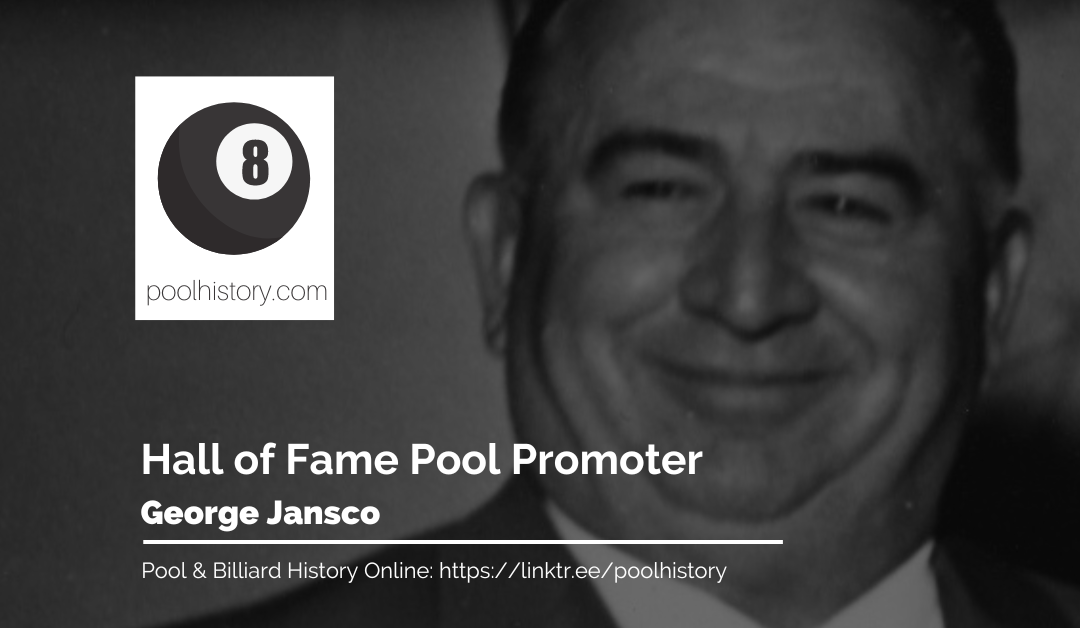
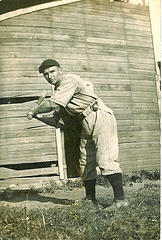



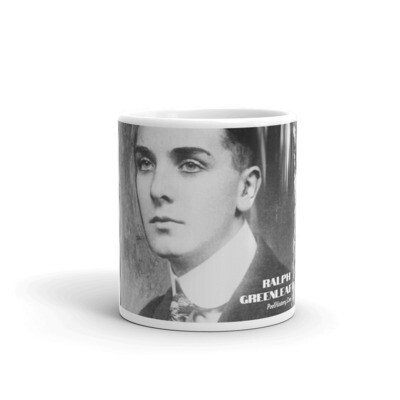

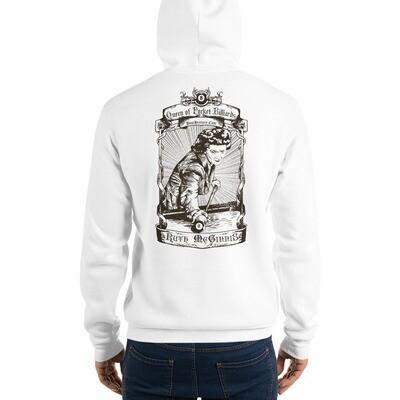


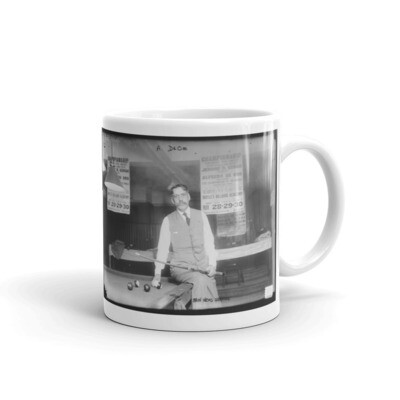

You can find George Jansco’s minor league baseball career statistics on the Baseball-Reference site. George played for the Tulsa Oilers between 1936-1938. George is quoted in the first installment of my book as saying Hayden Lingo invented One Pocket in 1931. Turns out there’s more to the story than that, but I thought George’s quote was significant because it wasn’t just second-hand knowledge but he was actually there in Oklahoma and hustling a little himself during the correct time frame. Lingo was in Tulsa when George played minor league ball there and I wouldn’t be surprised if that’s where they first met.